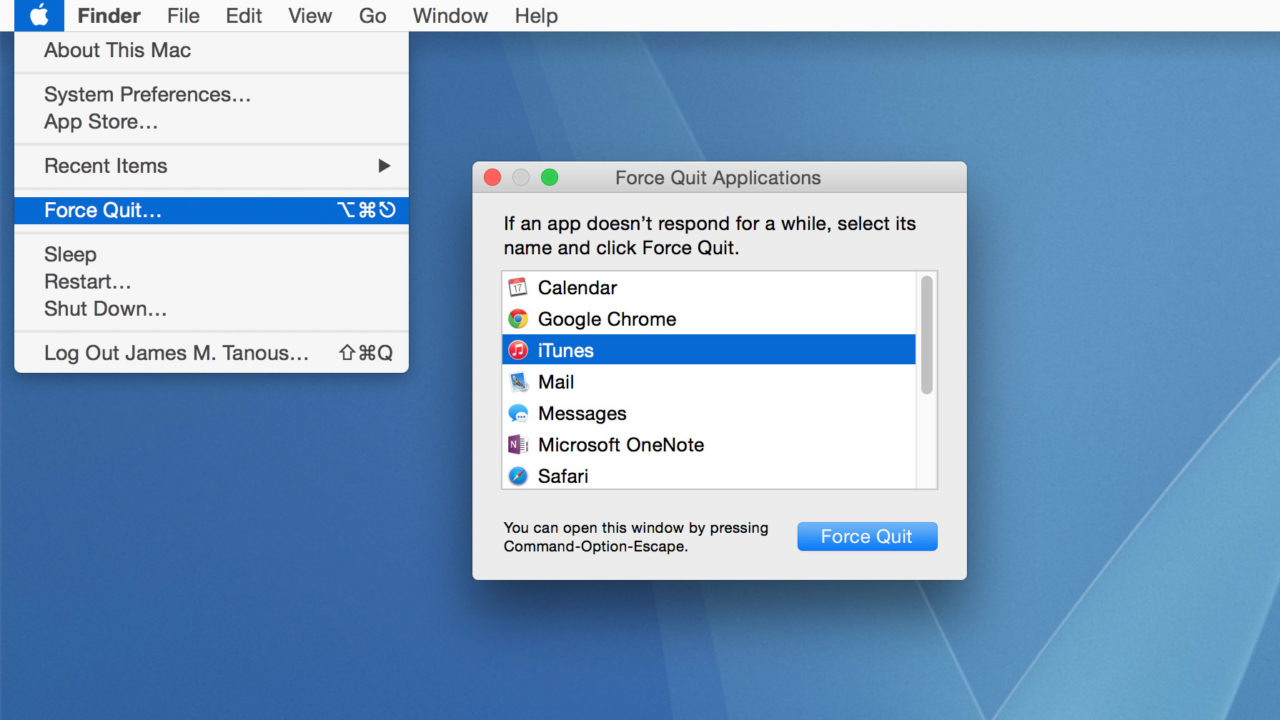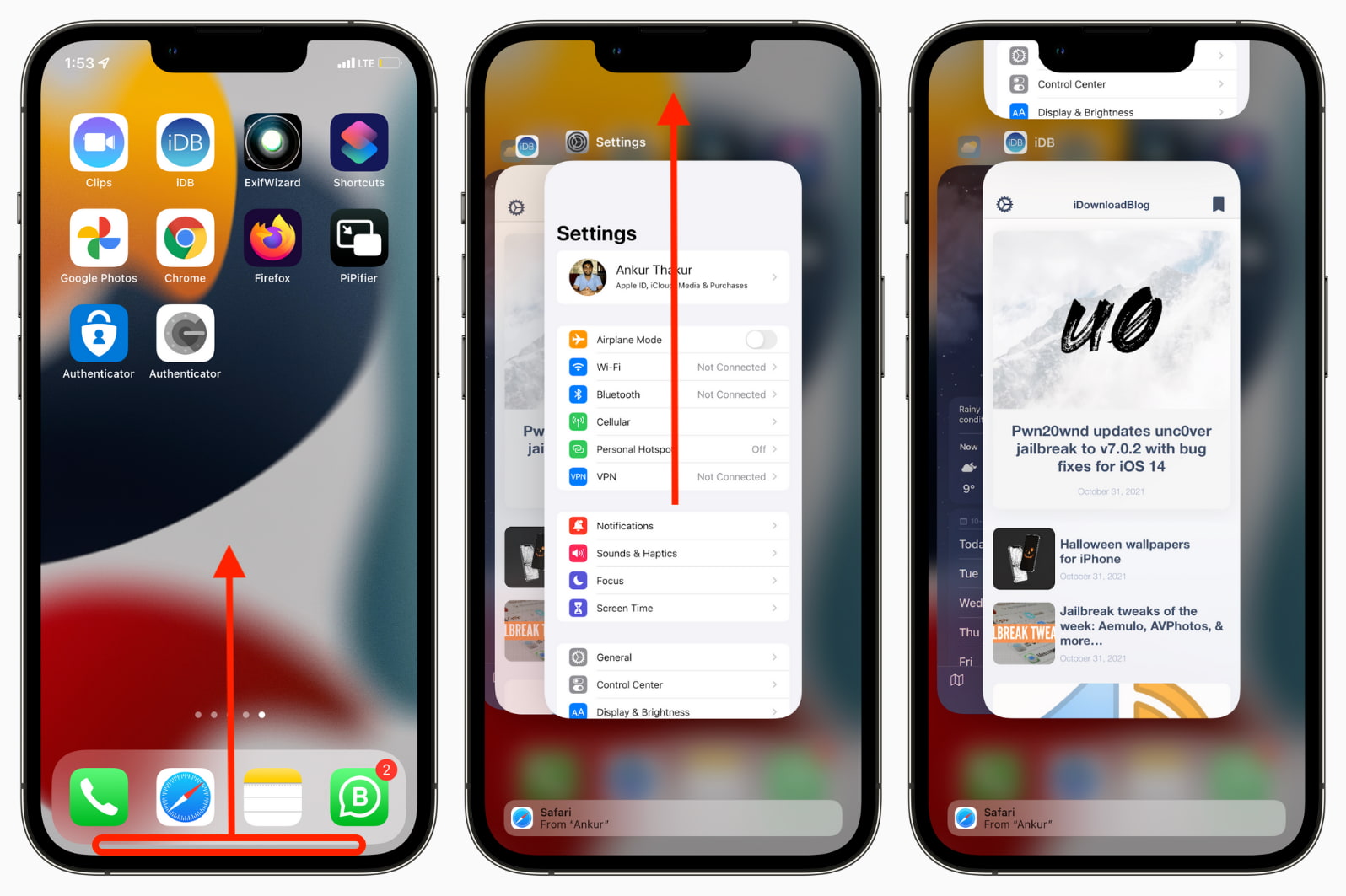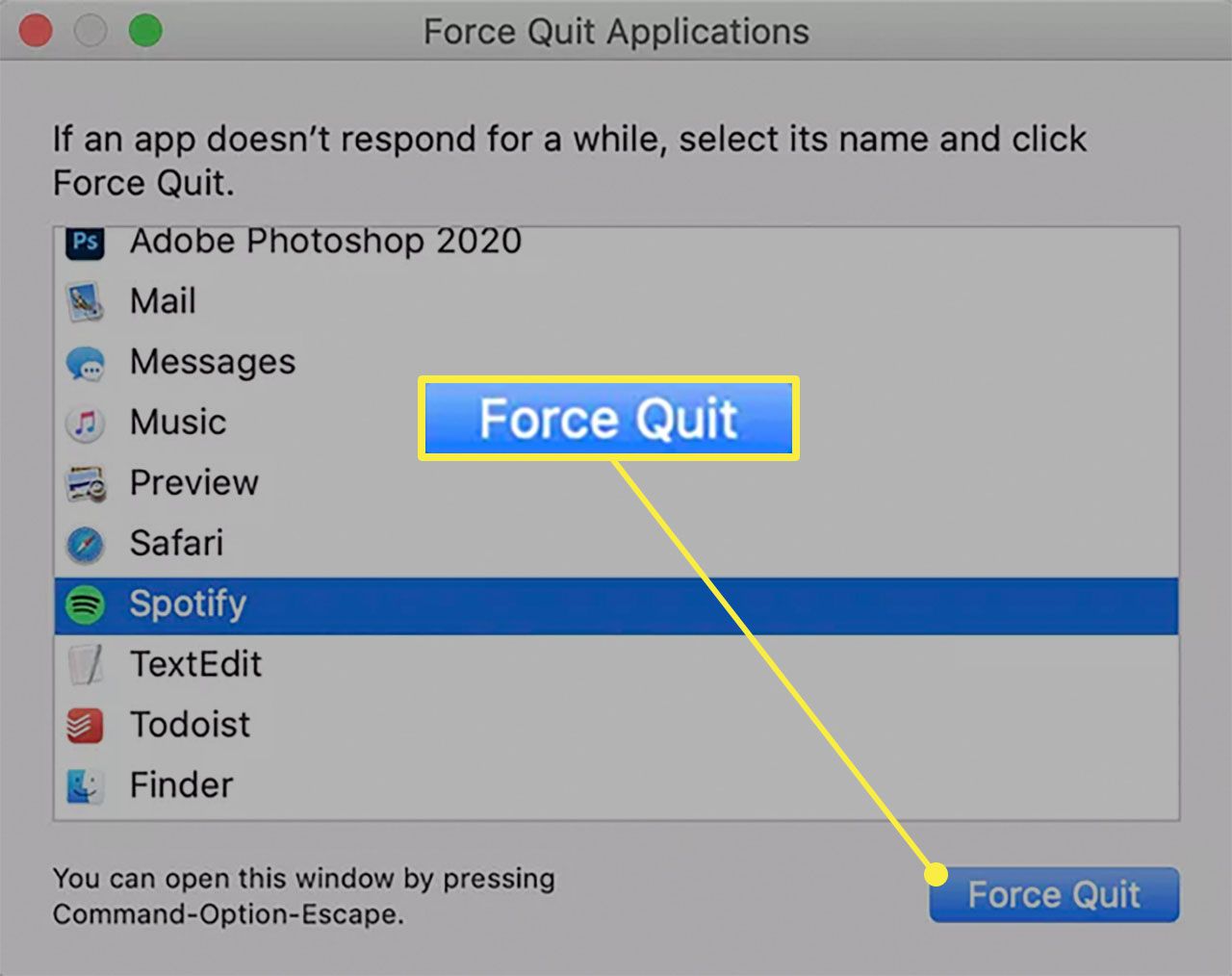Introduction
Safari, Apple's widely used web browser, is renowned for its sleek interface, robust security features, and seamless integration with the Apple ecosystem. However, even the most reliable software can encounter occasional glitches or unresponsive instances. In such scenarios, knowing how to force quit Safari becomes crucial for swiftly resolving issues and restoring optimal browsing functionality.
Force quitting a web browser refers to the process of terminating the application forcefully when it becomes unresponsive or fails to close through regular means. This action can be likened to a digital reset button, allowing users to swiftly address any hiccups and regain control of their browsing experience.
In this article, we will delve into the essential steps for force quitting Safari, empowering users to navigate through potential technical hiccups with ease. Additionally, we will explore alternative methods for force quitting Safari, providing a comprehensive toolkit for addressing unresponsive browser instances.
By understanding the nuances of force quitting on Safari and familiarizing ourselves with alternative solutions, we can ensure a seamless and uninterrupted browsing experience, even in the face of unexpected technical challenges. Let's embark on this journey to equip ourselves with the knowledge and skills necessary to navigate the digital realm with confidence and efficiency.
Understanding the Need for Force Quitting on Safari
In the realm of digital navigation, Safari stands as a steadfast companion, facilitating seamless exploration of the vast online landscape. However, even the most reliable browsers can encounter occasional turbulence, leading to unresponsive or frozen instances. When faced with such scenarios, the need for force quitting on Safari becomes evident.
Unresponsive browser instances can manifest in various forms, from frozen web pages and unclickable links to unmovable tabs and unresponsive controls. These instances can disrupt the browsing experience, impeding productivity and causing frustration. In such situations, force quitting Safari becomes a vital recourse, allowing users to swiftly address these technical hiccups and regain control of their browsing journey.
Moreover, force quitting on Safari becomes essential when encountering instances of high resource consumption or system slowdowns attributed to the browser. In such cases, force quitting the browser can alleviate the strain on system resources, potentially mitigating performance issues and restoring the overall functionality of the device.
Additionally, force quitting Safari can be necessary when encountering compatibility issues with certain web pages or extensions, leading to browser instability or unresponsiveness. By force quitting the browser, users can effectively reset its state, potentially resolving compatibility conflicts and ensuring a smoother browsing experience.
Understanding the need for force quitting on Safari is not merely about addressing technical glitches; it is about reclaiming control and restoring the browsing experience to its optimal state. By recognizing the significance of this action, users can navigate through unexpected technical challenges with confidence, knowing that they possess the knowledge and tools to swiftly overcome any browsing impediments.
In the following sections, we will delve into the essential steps for force quitting on Safari, empowering users to navigate through potential technical hiccups with ease. Additionally, we will explore alternative methods for force quitting Safari, providing a comprehensive toolkit for addressing unresponsive browser instances. Let's equip ourselves with the knowledge and skills necessary to navigate the digital realm with confidence and efficiency.
Steps to Force Quit on Safari
When encountering an unresponsive or frozen instance of Safari, executing a force quit can swiftly restore browsing functionality. The following steps outline the process of force quitting Safari, providing users with a clear and effective method for addressing technical hiccups:
-
Accessing the Apple Menu: Begin by navigating to the top-left corner of the screen to access the Apple menu. This can be achieved by clicking on the Apple logo, which is typically located in the top-left corner of the screen.
-
Selecting "Force Quit": Within the Apple menu, locate and select the "Force Quit" option. This action will prompt a window to appear, displaying a list of currently active applications, including Safari.
-
Identifying Safari: In the "Force Quit Applications" window, locate Safari from the list of active applications. It is represented by the Safari icon and name.
-
Selecting Safari for Force Quit: Click on Safari to highlight it within the "Force Quit Applications" window. This selection indicates that Safari will be the target for force quitting.
-
Initiating Force Quit: After selecting Safari, proceed to click the "Force Quit" button located in the bottom-right corner of the "Force Quit Applications" window. This action will prompt a confirmation dialog to appear, ensuring that the user intends to force quit Safari.
-
Confirming Force Quit: Upon the appearance of the confirmation dialog, click the "Force Quit" button to confirm the action. This finalizes the force quit process, terminating Safari and allowing for a fresh start.
By following these steps, users can effectively execute a force quit on Safari, swiftly addressing unresponsive instances and restoring optimal browsing functionality. This method provides a straightforward and efficient approach to resolving technical hiccups, empowering users to navigate through unexpected browser challenges with ease.
In addition to the primary method outlined above, there are alternative approaches to force quitting Safari, offering users flexibility in addressing unresponsive browser instances. These alternative methods will be explored in the subsequent section, providing a comprehensive toolkit for navigating through technical hurdles with confidence and efficiency.
Alternative Methods for Force Quitting on Safari
In addition to the primary method of force quitting Safari through the Apple menu, there exist alternative approaches that offer users flexibility in addressing unresponsive browser instances. These alternative methods provide additional options for swiftly resolving technical hiccups, ensuring a seamless browsing experience. Let's explore these alternative methods in detail:
Using Keyboard Shortcuts
Safari users can leverage keyboard shortcuts to initiate a force quit, providing a quick and convenient method for addressing unresponsive browser instances. By pressing "Option + Command + Esc" simultaneously, users can access the "Force Quit Applications" window, allowing them to select Safari and execute a force quit. This keyboard shortcut offers a streamlined approach, enabling users to swiftly navigate through the force quitting process without accessing the Apple menu.
Activity Monitor
The Activity Monitor, a built-in utility on macOS, offers a comprehensive view of system processes and resource usage. Users can utilize the Activity Monitor to force quit Safari by following these steps:
- Launch the Activity Monitor from the "Utilities" folder within the "Applications" directory.
- Within the Activity Monitor window, locate the Safari process under the "CPU" or "Memory" tab.
- Select the Safari process and click on the "X" button in the top-left corner of the Activity Monitor window to force quit the application.
Terminal Command
For advanced users familiar with terminal commands, force quitting Safari can be achieved through the Terminal application. By executing the "killall Safari" command in the Terminal, users can forcefully terminate all instances of the Safari application, effectively achieving a force quit. This method offers a command-line approach to force quitting Safari, catering to users with a preference for terminal-based solutions.
Force Quit from Dock
Users can also force quit Safari directly from the Dock, providing a convenient alternative to accessing the Apple menu. By right-clicking on the Safari icon in the Dock while holding down the "Option" key, users can reveal the "Force Quit" option, allowing for a swift termination of the unresponsive browser instance.
By familiarizing themselves with these alternative methods for force quitting on Safari, users can expand their toolkit for addressing unresponsive browser instances, ensuring a seamless and uninterrupted browsing experience. These methods offer flexibility and convenience, catering to diverse user preferences and technical proficiency levels.
Incorporating these alternative methods into their repertoire empowers users to navigate through unexpected technical challenges with confidence and efficiency, ensuring that they possess a comprehensive set of tools for swiftly addressing any browsing impediments.
Conclusion
In the dynamic realm of digital navigation, the ability to swiftly address technical hiccups is paramount to ensuring a seamless and uninterrupted browsing experience. Through the exploration of force quitting methods on Safari, users have gained valuable insights and practical techniques for navigating through unresponsive browser instances with confidence and efficiency.
By understanding the need for force quitting on Safari and familiarizing themselves with the essential steps, users are equipped to swiftly address unresponsive browser instances, restoring optimal browsing functionality with ease. The primary method of force quitting through the Apple menu provides a clear and effective approach, offering a reliable solution for addressing unexpected technical challenges.
Furthermore, the exploration of alternative methods for force quitting on Safari has expanded users' toolkit, providing additional options for swiftly resolving unresponsive browser instances. From leveraging keyboard shortcuts to utilizing the Activity Monitor and terminal commands, users have gained flexibility in addressing technical hiccups, catering to diverse preferences and technical proficiency levels.
As users incorporate these insights into their digital repertoire, they are empowered to navigate through unexpected technical challenges with confidence, knowing that they possess a comprehensive set of tools for swiftly addressing any browsing impediments. This knowledge not only enhances their browsing experience but also fosters a sense of control and mastery in the digital realm.
In essence, the ability to force quit on Safari transcends mere technical know-how; it embodies a proactive approach to digital navigation, empowering users to reclaim control and swiftly address unexpected browser challenges. By embracing these techniques, users can navigate through the digital landscape with confidence, knowing that they possess the knowledge and skills necessary to overcome any browsing impediments that may arise.
As we conclude this exploration of force quitting on Safari, let us carry forward this newfound knowledge and approach digital navigation with confidence, resilience, and a proactive mindset. By doing so, we can navigate through the digital realm with ease, ensuring that unexpected technical hiccups are swiftly addressed, allowing for a seamless and uninterrupted browsing experience.

























